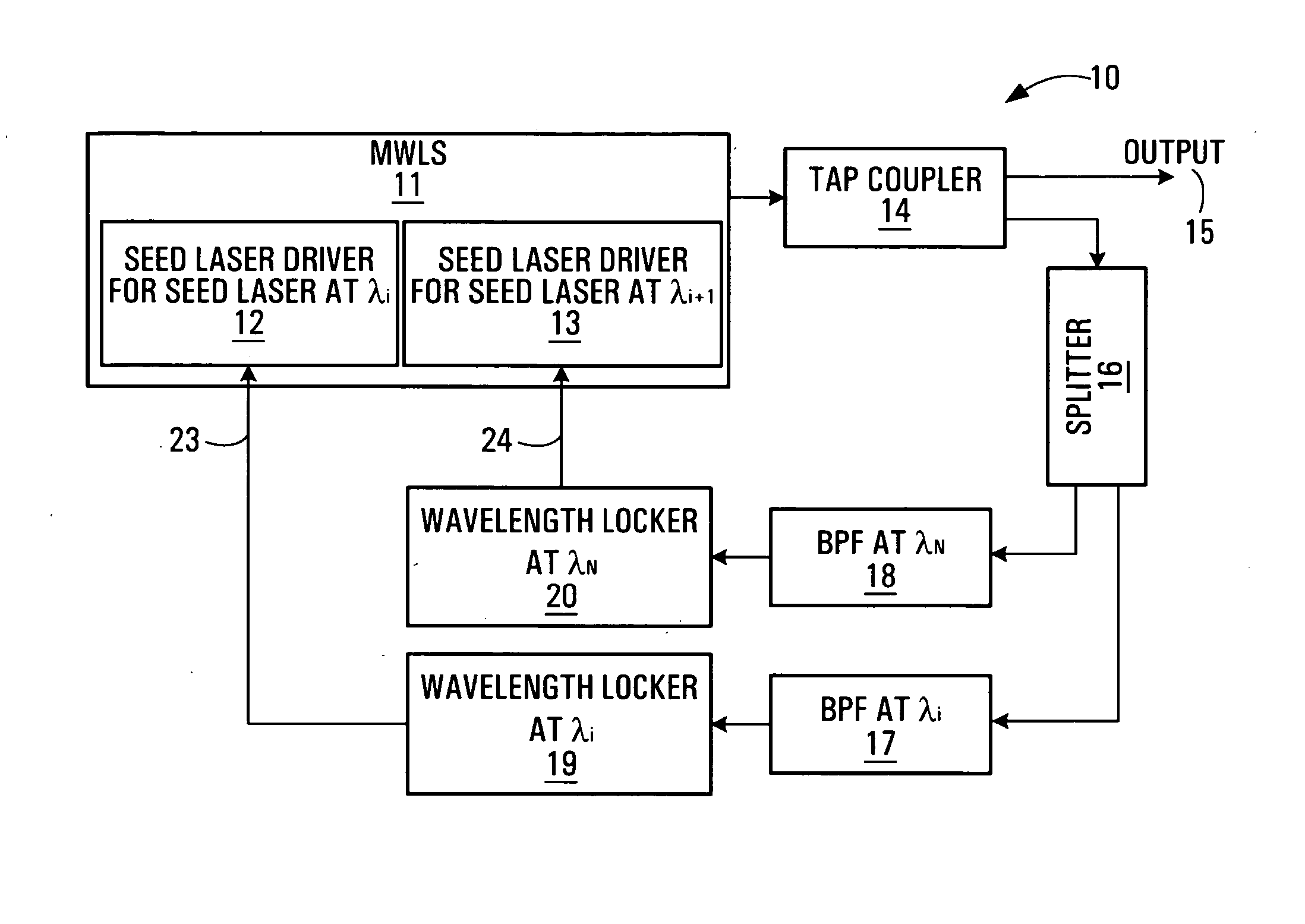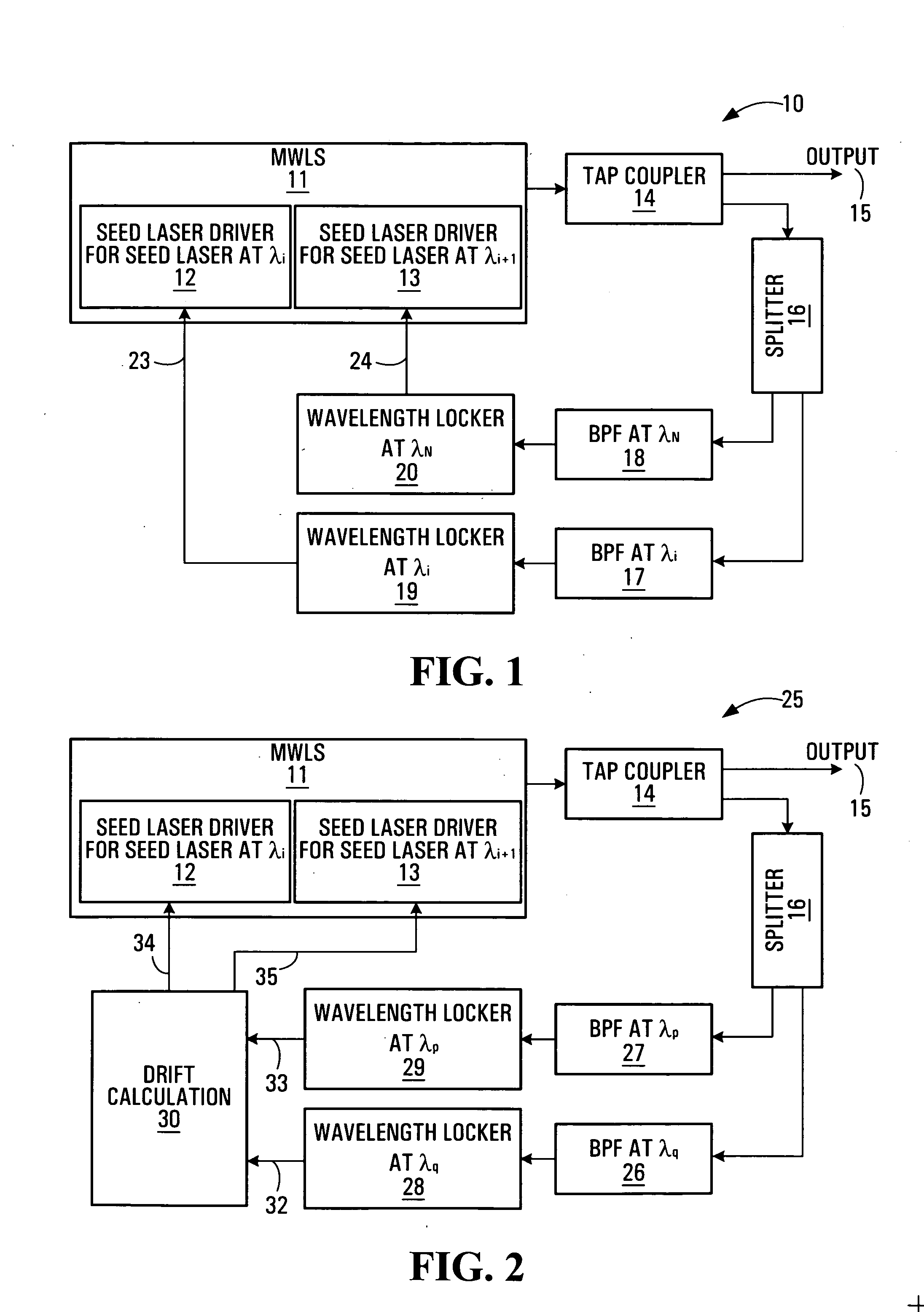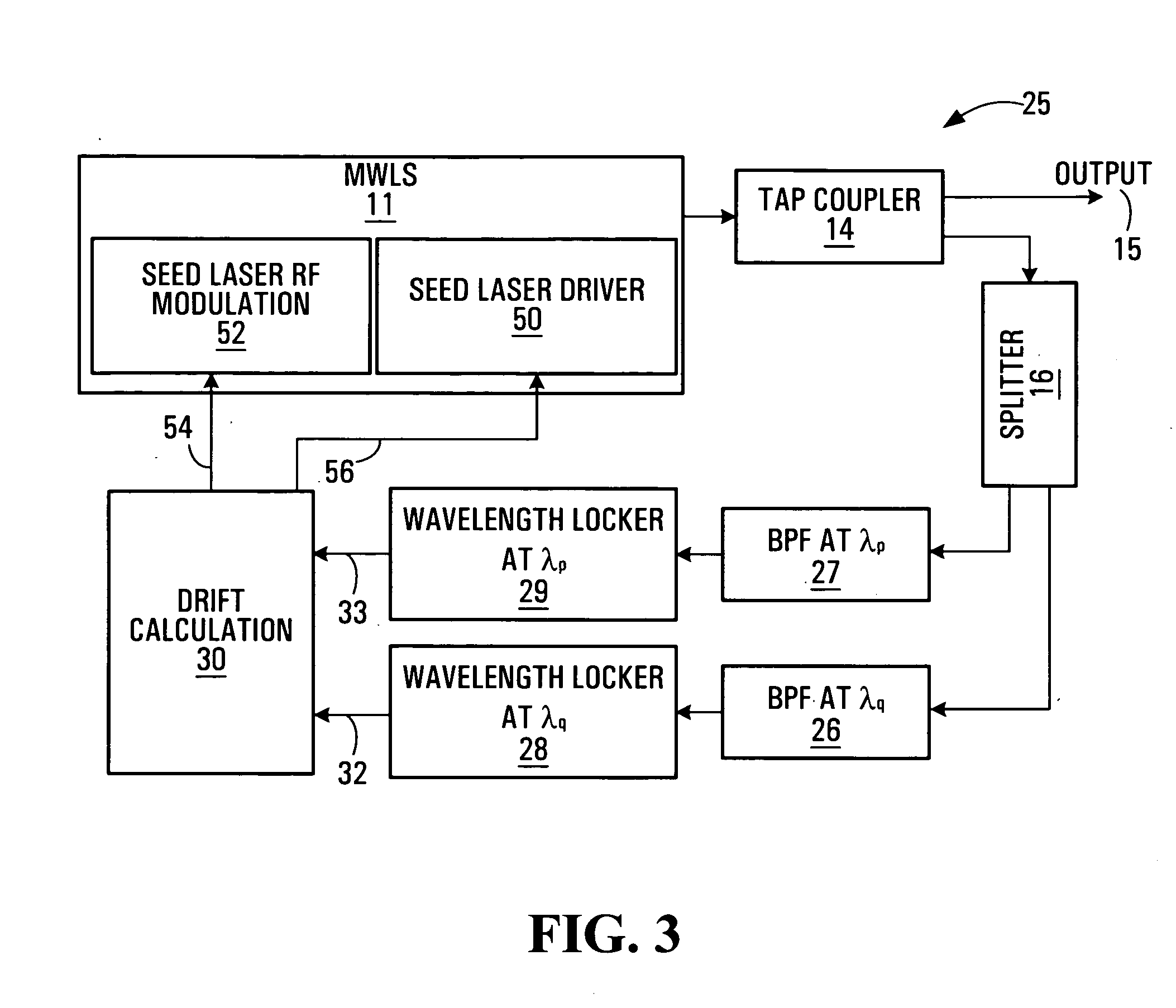Wavelength locking for multi-wavelength laser source
- Summary
- Abstract
- Description
- Claims
- Application Information
AI Technical Summary
Benefits of technology
Problems solved by technology
Method used
Image
Examples
first embodiment
the wavelength locking system 10 is illustrated in FIG. 1. Shown is a MWLS 11 which requires locking. In this particular example the MWLS 11 comprises a first seed laser driver 12 and a second seed laser driver 13. An output of the MWLS 11 is supplied to an input of a tap coupler 14. The tap coupler 14 has first and second outputs. The first output 15 is an output of the overall system 10. The second output is supplied to an input of a power splitter 16. The power splitter 16 has first and second outputs. The first output is connected to a first band pass filter (BPF) 17. The second output is connected to a second BPF 18. An output of the first BPF 17 is supplied to a first wavelength locker 19. An output of the second BPF 18 is supplied to a second wavelength locker 20. An output of the first wavelength locker 19 is supplied to the first seed laser driver 12. An output of the second wavelength locker 20 is supplied to the second seed laser driver 13.
In operation, the MWLS generate...
PUM
 Login to View More
Login to View More Abstract
Description
Claims
Application Information
 Login to View More
Login to View More - Generate Ideas
- Intellectual Property
- Life Sciences
- Materials
- Tech Scout
- Unparalleled Data Quality
- Higher Quality Content
- 60% Fewer Hallucinations
Browse by: Latest US Patents, China's latest patents, Technical Efficacy Thesaurus, Application Domain, Technology Topic, Popular Technical Reports.
© 2025 PatSnap. All rights reserved.Legal|Privacy policy|Modern Slavery Act Transparency Statement|Sitemap|About US| Contact US: help@patsnap.com



